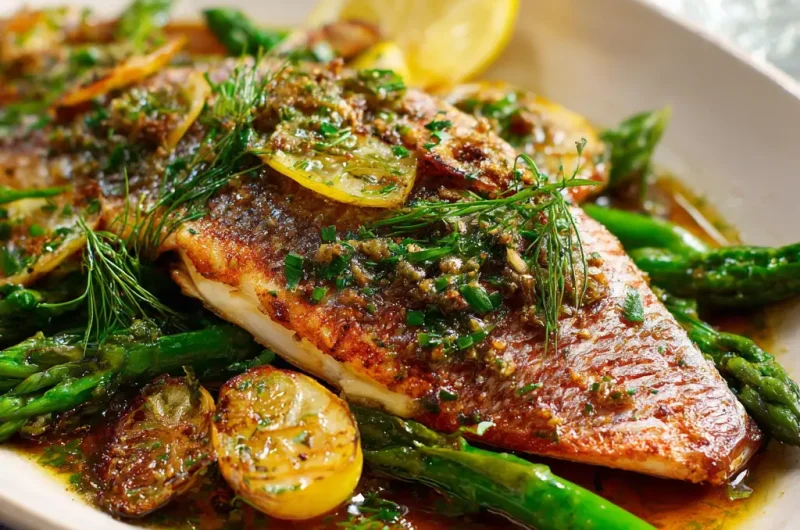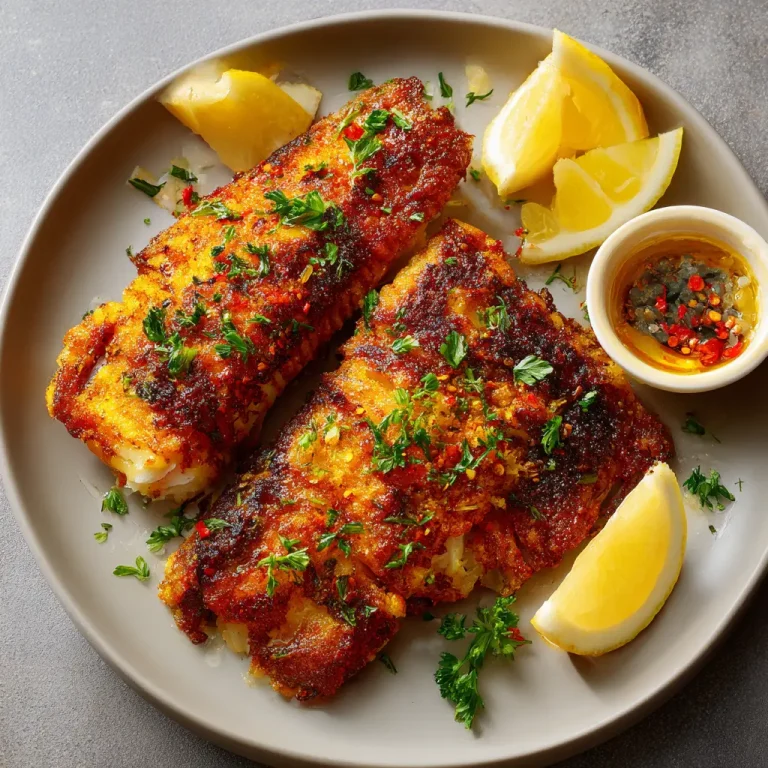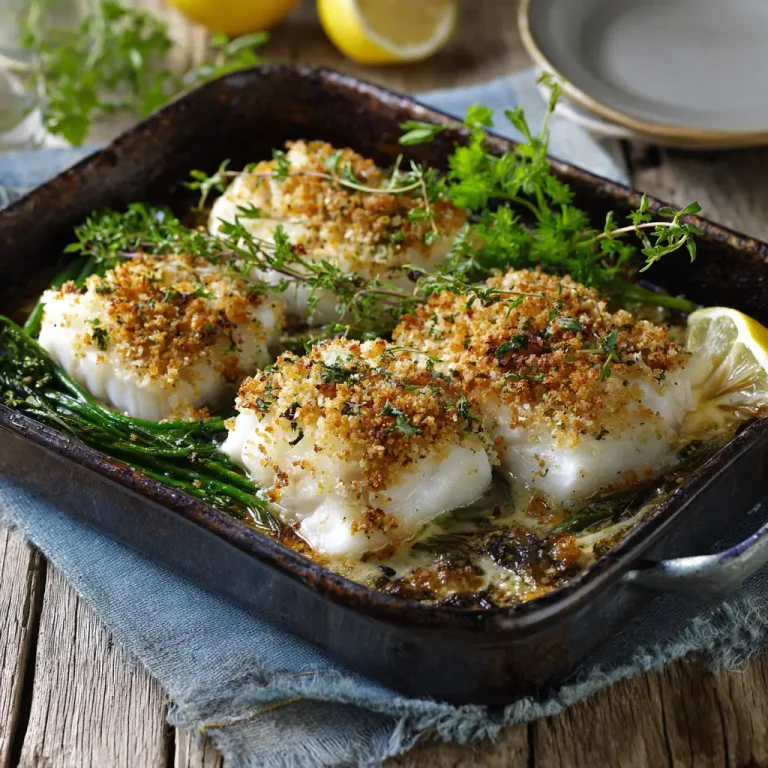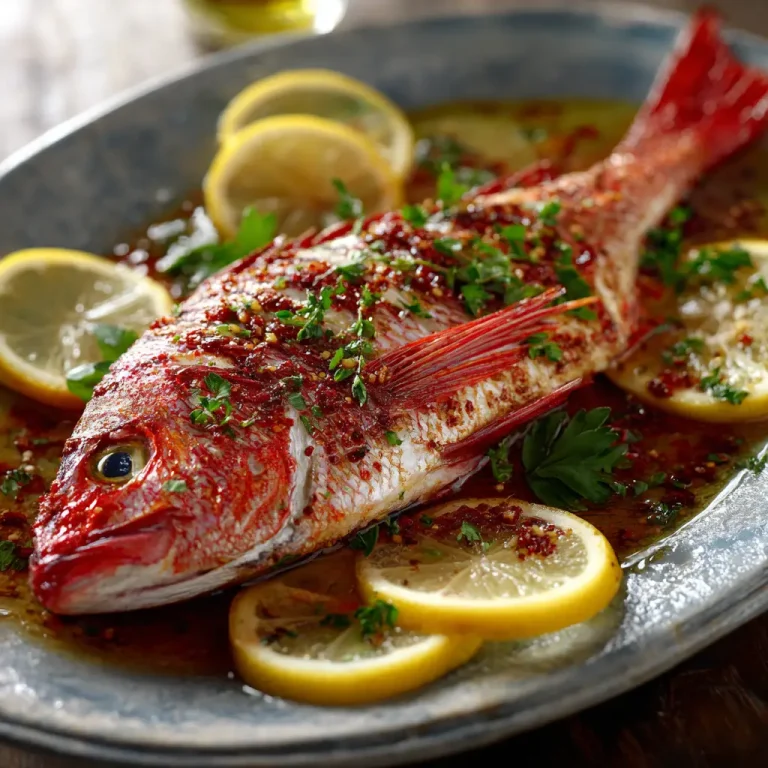Snapper Fish Recipe – Easy Pan-Seared Snapper with Lemon, Garlic and Fresh Herbs
Introduction
The fish at the centre of our recipe is the species commonly referred to as snapper (for example “red snapper”). It is prized because it is lean, rich in protein and mild in flavour which allows the seasonings to shine rather than be masked by the fish itself. According to nutrition data it offers about 20 g of protein per 100 g and almost no carbohydrates.
In the kitchens I’ve visited, the best results with snapper come from not over-cooking it, simply seasoning it well and pairing it with a sauce or garnish that complements rather than competes. The aim of this recipe is just that—highlight the fish but give you enough flavour to make it memorable.

Ingredients Needed
Here is a table listing each ingredient plus an approximate calorie count per amount used in this recipe (calories are approximate and will vary with portions and cooking methods).
| Ingredient | Amount | Approximate Calories* |
|---|---|---|
| Snapper fillet (skin-on) | 2 × 6-oz (≈340 g total) | ~230 kcal |
| Olive oil | 2 Tbsp (≈30 ml) | ~240 kcal |
| Lemon (juice and zest) | 1 medium lemon | ~20 kcal |
| Garlic cloves | 2 cloves | ~9 kcal |
| Fresh herbs (e.g., parsley, thyme) | 2 Tbsp chopped | ~4 kcal |
| Salt and freshly ground black pepper | to taste | negligible |
| Optional: capers or sliced olives | 1 Tbsp | ~10 kcal |
*Calories are estimates for the whole recipe and then you can divide per portion accordingly. For instance the fish itself provides about 100–130 kcal per 100 g when cooked.
Step-by-Step Cooking Instructions
- Prepare the fish
Pat the snapper fillets dry with paper towels. If the skin is on, lightly score the skin side with shallow diagonal cuts (about ¼-inch deep) to prevent curling and help the seasoning penetrate. - Season the fillets
Rub both sides of the fish (and the skin side) with salt and pepper. Zest the lemon and sprinkle half the zest over the fillets, then set aside. - Heat the pan
Place a heavy skillet (preferably non-stick or well-seasoned cast iron) over medium-high heat. Add the olive oil and allow it to shimmer but not smoke. - Sear the fish
Place the fillets skin-side down first. Let them cook without moving for about 3-4 minutes until the skin is crisp and golden. Then gently turn the fillets and cook for another 2-3 minutes on the other side, until the flesh is opaque and flakes easily when tested with a fork. - Add garlic and herbs
In the last minute of cooking add the minced garlic into the pan (away from the fish), and toss in the chopped herbs and remaining lemon juice. Spoon some of the herb-garlic-lemon mixture over the fillets just before finishing.For more insights on this topic and –Tilapia Recipes], make sure to check out our other recipe. - Serve immediately
Remove the fish onto warmed plates, spoon any juices from the pan over the top, and garnish with the remaining fresh lemon zest (for extra brightness) and optional capers or sliced olives.

Tips for Customising the Recipe
- Spice it up: If you like a bit of heat, add a pinch of chilli flakes or cayenne pepper when seasoning the fish.
- Alternate herbs: Instead of parsley and thyme you could use basil, dill or cilantro depending on the cuisine you are leaning toward.
- Use whole fish: If you can source a whole snapper, you can roast it in the oven stuffed with lemon slices and herbs; the same basic seasoning logic applies.
- Change the sauce: For a creamy option, add a splash of white wine and cream to the pan after removing the fish to make a quick pan sauce. For a lighter version, drizzle with extra virgin olive oil and lemon juice only.
- Different cooking method: If you prefer baked or grilled, just adjust time accordingly—grill skin side down for about 4-5 minutes each side, or bake at 425°F (≈220°C) for about 10-12 minutes for fillets.
- Side adaptations: You could top the fish with a salsa of tomato, onion and herbs or serve with a mango-lime relish for a tropical twist.
- Low carb or keto variant: Skip starchy sides and serve with steamed greens or roasted cauliflower. The fish is naturally low in carbs.
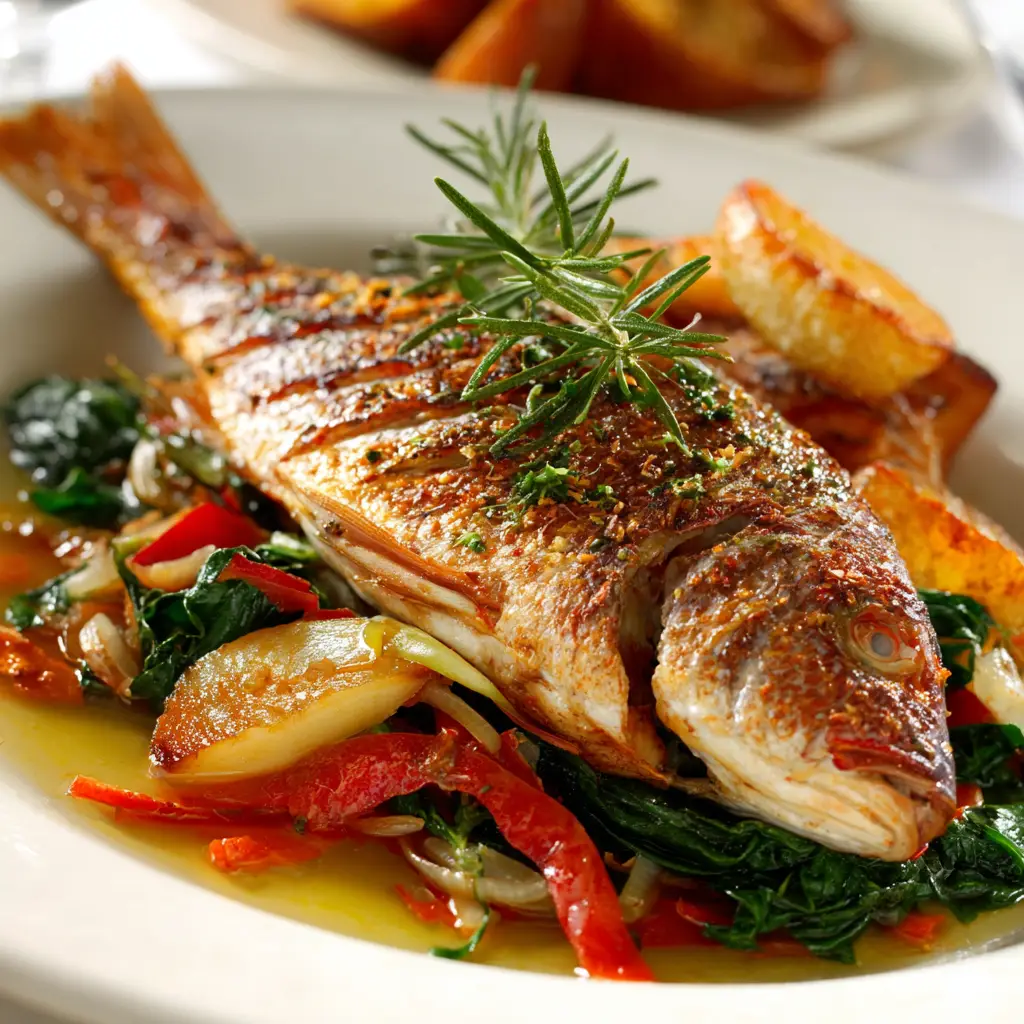
Nutritional Information
Here are some of the key nutrition facts for the fish used in the recipe:
When you combine the fish with olive oil and lemon/herbs the overall meal will provide a solid protein base, healthy fats from the olive oil and minimal unwanted carbohydrates—ideal for many balanced-eating plans.
Serving Suggestions
- Serve the fillets alongside a bed of steamed vegetables such as asparagus, broccoli or green beans for a fresh and healthy plate.
- Pair with a simple herbed rice or quinoa pilaf to soak up the pan juices.
- For a Mediterranean twist serve with Greek salad, warm pita bread and tzatziki on the side.
- If you are aiming for a more indulgent meal, top the fish with lemon-butter sauce or caper-butter sauce and serve with roasted baby potatoes.
- Garnish with fresh lemon wedges so each diner can add extra tang to taste.
- Offer a crisp white wine such as Sauvignon Blanc or a light rosé if you drink alcohol. Non-alcoholic: sparkling water with lemon works beautifully.
- For a family-friendly version serve the fillets with a simple tomato-cucumber salad and whole-grain bread on the side.
Snapper Fish Recipe – Easy Pan-Seared Snapper with Lemon, Garlic and Fresh Herbs
Course: Blog2
servings10
minutes10
minutes250
kcalIngredients
2 snapper fillets (about 6 oz each)
2 tablespoons olive oil
1 medium lemon (juice and zest)
2 garlic cloves, minced
2 tablespoons chopped fresh herbs (parsley, thyme, or cilantro)
Salt and freshly ground black pepper, to taste
Optional: 1 tablespoon capers or sliced olive
Directions
- Prepare the Fish
- Pat the snapper fillets dry with paper towels. Lightly score the skin side with shallow cuts if the skin is on.
- Season the Fillets
- Rub both sides with salt, pepper, and half the lemon zest. Set aside for a few minutes.
- Heat the Pan
- Heat olive oil in a skillet over medium-high heat until shimmering.
- Cook the Fish
- Place the fillets skin-side down first. Cook for 3–4 minutes without moving, then flip and cook for another 2–3 minutes until the flesh turns opaque and flakes easily.
Recipe Video
Notes
- For the best flavor, use fresh snapper fillets and avoid overcooking them. The fish should be tender and flaky, not dry. Pair this dish with steamed vegetables, herbed rice, or a crisp salad for a balanced and refreshing meal.
Frequently Asked Questions (FAQs)
Q: How do I know when the snapper is cooked through?
A: The flesh should be opaque (not translucent) and flake easily with a fork at the thickest part. Avoid over-cooking because it will become dry.
Q: Can I use frozen snapper fillets instead of fresh?
A: Yes you can. Just make sure they are well-thawed, patted dry and excess moisture removed before seasoning and cooking. Drying the fillets helps you get a good sear.
Q: Should I cook with or without the skin?
A: Cooking with the skin on helps keep the fillet together and adds flavour and crispness if you sear the skin side. After cooking you can leave the skin on or remove it before serving.
Q: Is snapper a healthy fish choice?
A: Yes, it is lean, high in protein and low in carbohydrates and saturated fat. However like many fish varieties it may contain moderate mercury levels, so vary your fish choices if you eat seafood frequently.
Q: How should I store leftovers and re-heat?
A: Store leftovers in an airtight container in the refrigerator for up to 1–2 days. To re-heat, gently warm in a pre-heated oven at about 300°F (≈150°C) for 8–10 minutes, loosely covered, to avoid drying out the fish.
Conclusion
Cooking snapper fish offers a wonderful balance of elegant yet approachable dining. The mild sweet flesh, firm texture and compatibility with herbs, citrus and light sauces make it a favourite in my kitchen and I hope it becomes one in yours too. With the right seasoning and care it becomes a dish you will be proud to serve to family or friends.

